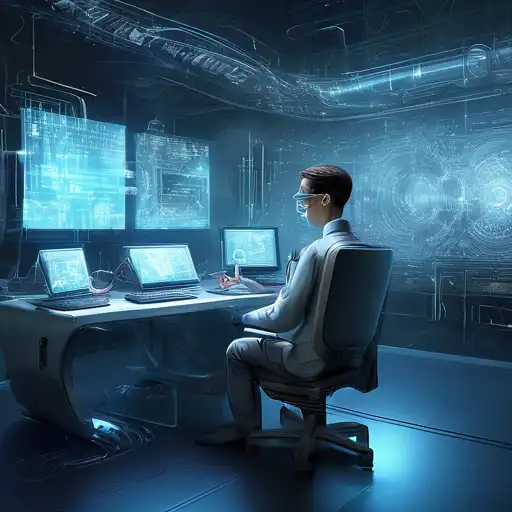Introduction to Computer Vision Technology
Computer vision technology has undergone significant transformations over the past few years, becoming a cornerstone in the development of artificial intelligence (AI) and machine learning (ML) applications. This technology enables machines to interpret and understand the visual world, mimicking human vision but at a scale and speed that is beyond human capabilities.
Recent Breakthroughs in Computer Vision
The field of computer vision has seen remarkable advancements, thanks to the integration of deep learning algorithms and the availability of vast datasets. These innovations have improved the accuracy and efficiency of image recognition, object detection, and facial recognition systems, making them more reliable and versatile than ever before.
Deep Learning and Neural Networks
Deep learning, a subset of machine learning, has been instrumental in advancing computer vision technologies. Convolutional Neural Networks (CNNs), in particular, have become the backbone of many computer vision applications, enabling machines to achieve human-like accuracy in image classification and analysis.
Real-time Image Processing
Another significant advancement is the ability to process and analyze images in real-time. This capability is crucial for applications such as autonomous vehicles, surveillance systems, and augmented reality (AR), where immediate interpretation of visual data is essential.
Applications of Advanced Computer Vision
The applications of computer vision technology are vast and varied, impacting numerous industries including healthcare, automotive, retail, and security. Below are some of the most impactful applications:
- Healthcare: Computer vision is used for diagnostic purposes, such as analyzing X-rays and MRI scans to detect abnormalities.
- Automotive: Autonomous vehicles rely on computer vision for navigation, obstacle detection, and traffic sign recognition.
- Retail: From inventory management to customer behavior analysis, computer vision is transforming the retail industry.
- Security: Facial recognition and surveillance systems use computer vision to enhance security measures.
Challenges and Future Directions
Despite its advancements, computer vision technology faces challenges such as data privacy concerns, the need for large datasets, and the risk of bias in AI models. However, ongoing research and development are addressing these issues, paving the way for more ethical and efficient computer vision solutions.
The future of computer vision is bright, with potential breakthroughs in 3D image processing, augmented reality, and beyond. As technology continues to evolve, the possibilities for computer vision applications are limitless.
Conclusion
Advancements in computer vision technology are revolutionizing how machines understand and interact with the visual world. With its wide-ranging applications and continuous improvements, computer vision is set to play a pivotal role in the future of technology. For more insights into the latest tech trends, explore our technology section.
